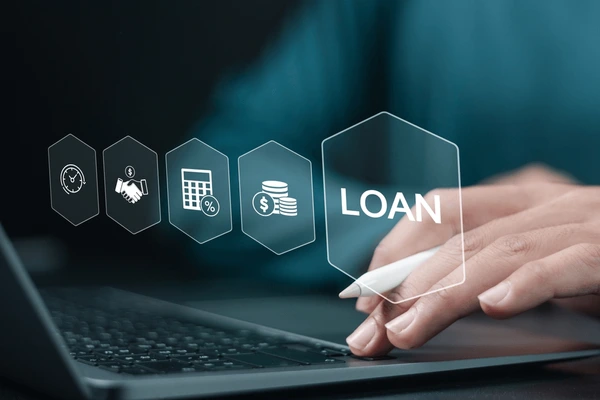
What’s Happening with the SAVE Plan?
November 2, 2025
Use an Installment Loan for Unexpected Expenses
November 2, 2025How a Self-Employed Person Can Get a Home Loan (U.S. Guide)
Being self-employed isn’t a roadblock to homeownership—it just means underwriting looks deeper. Lenders still evaluate the same core questions: Can you repay? Is your income stable and documented? This guide walks you through how income is calculated, what to prepare, which loan options fit, and the moves that meaningfully improve approval odds.
What lenders care about (same for W-2 or self-employed)
- Ability to repay: Verified income that’s stable and likely to continue.
- Debt-to-Income (DTI): Your monthly debts ÷ your gross monthly income. Lower is better; many programs aim for ≤ 43%, though strong files can be approved higher.
- Credit profile: Scores, history, and recent inquiries.
- Down payment & reserves: Source of funds and cash left after closing (often 2–6 months of housing payments; more for multi-unit or investment).
- Property: Appraisal, condition, and type (primary vs. second home vs. investment).
How underwriters calculate self-employed income
Expect to document two years of self-employment, though some borrowers qualify with one strong year in the same line of work if they can show prior experience or stable earnings.
If you’re a sole proprietor (Schedule C)
- Start with Net Profit from Schedule C for the last two years.
- Lenders often add back non-cash expenses like depreciation, depletion, amortization.
- They may subtract nonrecurring losses or ineligible add-backs and will scrutinize any declining trend.
If you’re a partner or S-Corp owner (K-1, 1065/1120S)
- They’ll review K-1 Box 1 income, plus add-backs (e.g., depreciation), and your ownership percentage.
- Distributions matter: if income is mostly “on paper,” underwriters look for actual distributions or proof you can access business funds without harming the business.
- If you pay yourself a W-2 salary from the S-Corp, that W-2 counts, and additional pass-through income may count with proper access/liquidity.
If you own a C-Corp (1120)
- Your W-2 salary is primary. Corporate dividends/bonuses can be counted with documentation and stability.
- Using corporate income beyond your W-2 requires showing access and that the business remains healthy.
YTD proof is critical
For the current year, expect to provide a Year-to-Date (YTD) Profit & Loss and often a YTD balance sheet—sometimes CPA-prepared. Lenders compare YTD to prior years to ensure your trend is consistent.
Documents to gather (the short list)
- Personal tax returns (last 2 years) with all schedules
- Business tax returns (last 2 years), if applicable (1065/1120S/1120 + K-1s)
- YTD P&L and balance sheet (sometimes CPA-prepared)
- Business license, CPA letter, or proof of business existence
- Business bank statements (often last 12–24 months for alternative-doc programs)
- Personal bank/asset statements (last 2–3 months)
- Photo ID, insurance, mortgage statements for any properties you already own
- Letters of explanation for big swings, gaps, or unusual deposits
Pro tip: Keep personal and business finances separate. Clean statements make approvals faster and less stressful.
Loan options that work for self-employed borrowers
Conventional (Fannie Mae/Freddie Mac)
- Widely available; competitive rates.
- Typically require 2 years of returns (one year possible for strong files).
- Down payments can be as low as 3–5% for primary homes (credit and income permitting).
FHA
- More flexible on credit and recent credit hiccups.
- 3.5% down minimum (with qualifying credit).
- Full income documentation still required; great for first-time buyers who need a bit more flexibility.
VA (for eligible veterans/servicemembers)
- Often 0% down with competitive rates and fees.
- Self-employed vets still document income, but guidelines can be friendlier overall.
Non-QM / Alternative-Doc (when tax returns don’t tell the whole story)
- Bank-statement loans: Qualify using 12–24 months of business or personal bank statements to average deposits. Lenders apply an expense factor (e.g., 40–60%) or accept a CPA expense letter.
- 1099-only loans: Use your 1099 history to derive income.
- Asset-depletion loans: Convert liquid assets into qualifying “income” via a formula.
- DSCR loans (for investors): Qualification based on Debt Service Coverage Ratio using the property’s rent rather than your personal income; typically for non-owner-occupied properties.
Alternative-doc loans usually require larger down payments, more reserves, and carry higher rates/fees. They’re powerful tools when used intentionally.
90-Day Playbook: From “thinking about it” to preapproved
90–120 days before you shop
- Talk to your CPA: If you plan to buy this year, discuss how much you write off. Aggressive deductions lower taxes and qualifying income.
- Stabilize your business profile: Avoid entity changes, major ownership shifts, or big swings in how you pay yourself.
- Tune your credit: Pay all accounts on time, keep credit-card balances low, and avoid new debt.
60 days out
- Assemble your file (docs list above).
- Season your funds: Large deposits must be sourced; keep down-payment money in one place for 60+ days.
- Decide your strategy: Traditional full-doc vs. bank-statement or other non-QM options.
Get preapproved (not just prequalified)
- Apply with 3–4 lenders within a short window to minimize credit impact and compare options.
- Ask for TBD underwriting (property-address-to-be-determined) if available—an underwriter reviews your docs before you make offers, which strengthens your position.
While home shopping
- Freeze your financial picture: No new credit lines, no big purchases, no mixing business and personal funds.
- Document everything: Any unusual deposit or change? Tell your loan officer immediately.
How to boost approval odds (what actually moves the needle)
- Show a steady or rising income trend across two years and YTD. Include a brief Letter of Explanation if one year dipped (e.g., one-time expense, launch cost, project timing).
- Lower your DTI: Pay down high-interest revolving balances and small installment debts to reduce monthly obligations.
- Increase reserves: Extra savings can offset risk, especially for self-employed borrowers or unique properties.
- Use a co-borrower (when appropriate): A W-2 co-borrower can help with income stability (they’ll be on the loan and title).
- Be strategic with distributions: If you rely on K-1 income, consistent distributions help demonstrate access to pass-through income.
- Choose the right property: Primary residences and standard properties are easier. Unique homes, condos with weak HOA budgets, or multi-units raise underwriting scrutiny.
Common pitfalls to avoid
- Unseasoned large deposits or cash that can’t be sourced.
- Intermingled accounts: Business funds used for personal down payments without an access and liquidity analysis.
- Declining income without a compelling, documented reason.
- Entity changes right before applying (e.g., switching to an S-Corp this quarter).
- New debt (vehicles, equipment, credit lines) during escrow.
- IRS tax liens or unpaid returns—address them early with payment plans or proof of resolution.
Example: Estimating qualifying income (simplified)
- Schedule C borrower
- Year 1 Net Profit: $92,000
- Year 2 Net Profit: $104,000
- Add-backs (depreciation, amortization): $6,000 (avg)
- Average income: (92,000+104,000)/2(92,000 + 104,000)/2(92,000+104,000)/2 + 6,000 ≈ $103,000/yr (≈ $8,583/mo)
- (Underwriting may adjust for trend and specific add-backs—this is just directional.)
- S-Corp owner
- W-2 salary: $72,000
- K-1 Ordinary Income (avg): $28,000
- Actual distributions consistent with K-1
- Total usable income ≈ $100,000/yr (≈ $8,333/mo), subject to add-backs and access analysis.
Use these ballparks to test how paying off a card or truck loan could lower your DTI enough to qualify for more.
Rate locks, verifications, and the finish line
- Rate lock: Typically happens after you have a property under contract. Lock periods (e.g., 30–60 days) should match your closing timeline.
- VOE/Business check: Lenders usually verify your business is active right before closing; avoid long trips or going unreachable.
- Final credit check: Expect a soft pull or rescore before funding—don’t add new debt late in the game.
Quick FAQ
Can I qualify with just one year of self-employment?
Sometimes—especially if you remained in the same line of work and your income is strong and well-documented.
Do lenders use gross or net income?
Primarily net (after business expenses), with add-backs for certain non-cash items like depreciation.
Can I use business funds for the down payment?
Yes, but you must document ownership, access, and that the withdrawal won’t harm the business (often via a CPA letter and balance sheet).
Are bank-statement loans “bad” loans?
They’re simply non-QM options with different documentation and risk pricing. Useful if tax returns understate your true cash flow.
What minimum credit score do I need?
Varies by program/lender. Higher scores unlock better pricing and more options; 700+ generally improves terms, while many programs are available below that.
Read More:
- Does a Student Loan Affect Your Credit Rating in Florida?
- How to Get Preapproved for a Home Loan in the United States
- Comparing LendingClub and easzfin: Which Lending Platform is Right for You?
- How to Get a Startup Business Loan with No Money in Hawaii: A Step-by-Step Guide
- Comparing Credibly and EasyFin: Choosing the Best Loan Provider for Your Needs




